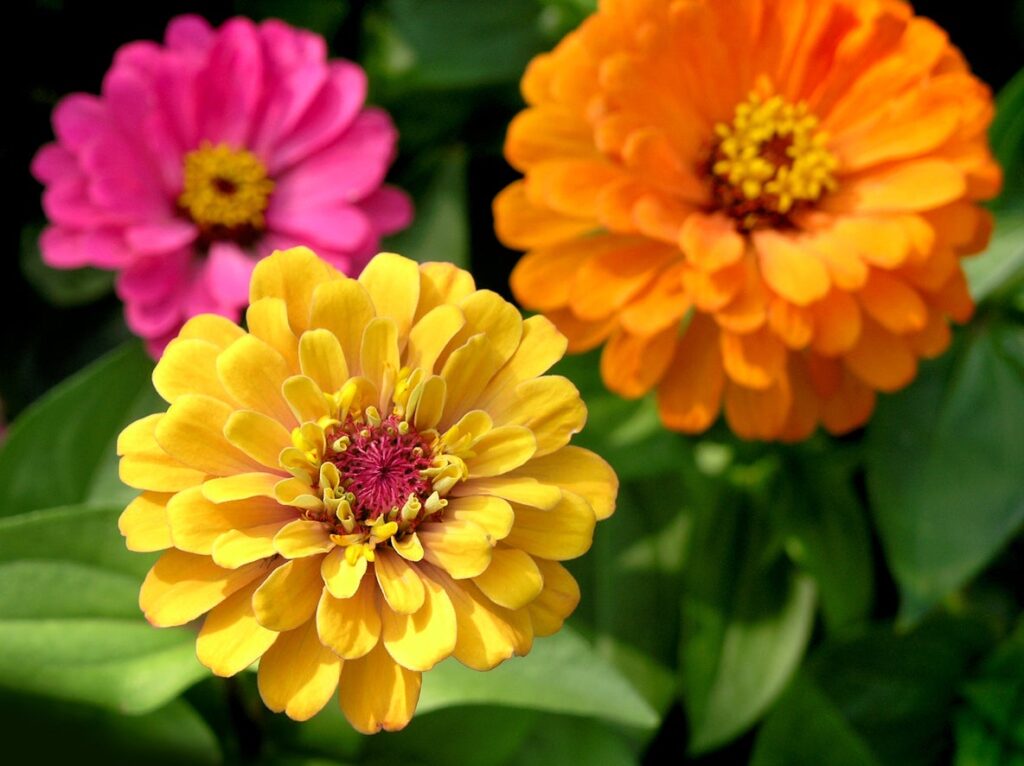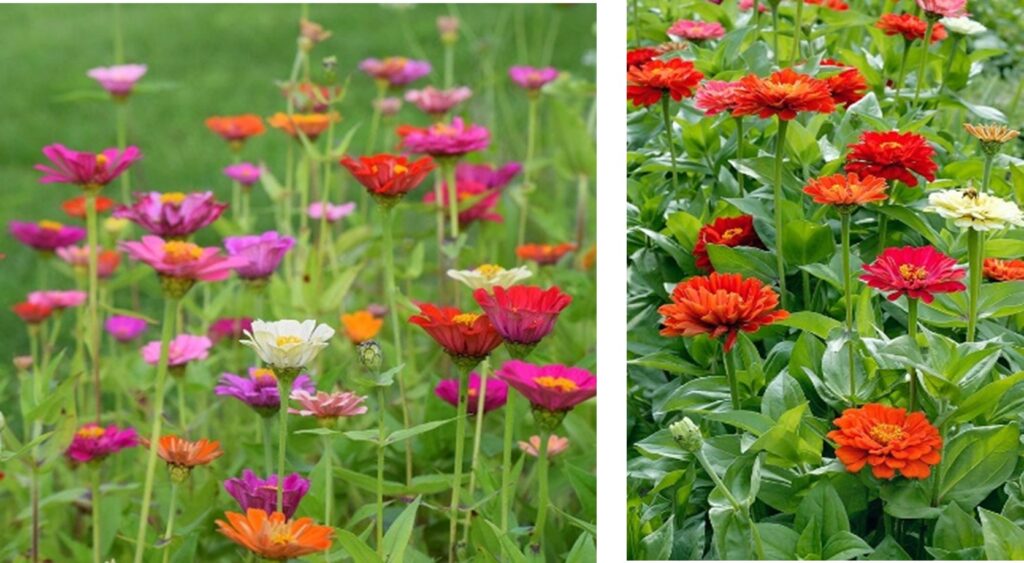Zinnia
Zinnia elegans


Characteristics
- Type: Annual
- Zone: 2 – 11
- Height: 1 – 4 Feet
- Spread: 9 – 12 Inches
- Bloom Time: June to Frost
- Bloom Description: Red, Yellow, Orange, Pink, Rose, Lavender, Green and White
- Sun: Full Sun
- Water: Medium
- Maintenance: Medium
- Suggested Use: Annual
- Flower: Showy
- Attracts: Birds, Hummingbirds, Butterflies
- Tolerates: Black Walnut
Culture
The ever-popular Zinnia is an annual that is easily grown in humusy, evenly moist, well-drained soils in full sun. Sow seed directly in the ground after last frost date and, if desired, at 2-3 week intervals thereafter until the end of June to insure a good season-long bloom. Blooming from mid-summer until frost, Zinnias are some of the easiest wildflowers to grow, adding their bright, cheerful color to any sunny spot with enthusiasm. These beloved annuals are deer resistant, long blooming and very prolific – the more you cut for bouquets, the more flowers your plants will produce. Best of all, they are a monarch butterfly magnet! Plant disease-resistant varieties in hot and humid summer climates. Good air circulation helps prevent onset of fungal leaf diseases. Deadhead spent flowers to promote additional bloom and maintain plant appearance.
Noteworthy Characteristics
Zinnia elegans, known as common zinnia, is an old garden favorite with may cultivars available. They are bushy, leafy annuals that typically grow 1-3’ (less frequently to 4’) tall on upright, hairy, branching stems. They feature continuous summer to fall bloom in cool summer climates, but may slow down some at the peak of a typical Texas summer, particularly if attacked by fungal diseases. Many flower forms (single, semi-double and double) and colors (shades of red, yellow, orange, pink, rose, lavender, green and white) are available. Sizes range from small-flowered dwarfs (to 6” tall) to large-flowered giants (to 4’ tall). Ovate to lance-shaped, opposite leaves (to 5” long) clasp the stems. Excellent fresh cut flower. Genus name honors Johann Gottfried Zinn (1727-1759), professor of botany, Gottingen.
Problems
Susceptible to powdery mildew, leaf spots, root rots, blight and Botrytis. Watch for Japanese beetles.
Garden Uses
Mixed borders, beds, cottage gardens, cutting gardens and containers.